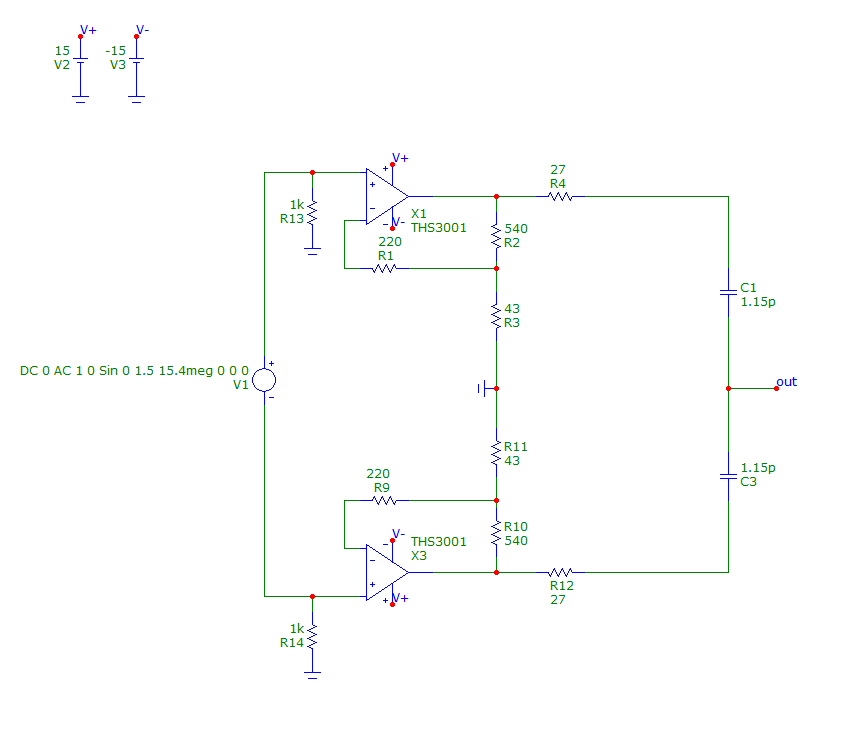Hey guys
I'm running out of Ideas on how to resolve this problem. I have a high speed diff amplifier composed of two THS3001 according to the attached simplified schematic.
The 15.4MHz-Signal, which is amplified by the two THS3001 to 16Vpp each (32Vpp diff) is fed to a precision capacitive bridge. The remaining signal at the "out"-node therefore has a very small amplitude (~10mV) and is afterwards demodulated by means of an IQ-Demodulator.
Now my problem is that in the first four badges of 15 PCBs each, there have been overall two Boards that showed excessive phase delay in the two THS3001. This additional delay cannot be measured with an oscilloscope, but only with the amplified Q-output of the mixer. I checked every resistor and capacitor value around the amplifier circuit, but it wasn't until I changed the Amps before the phase delay returned back to the normally measured value.
Does anyone have an idea why there are some Amps that show this behavior or what event could cause such an error?
Thanks for your help!


